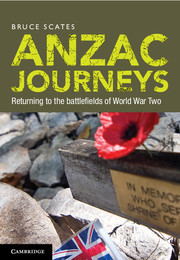10 - Walking the Trail: Kokoda
from PART 4 - AUSTRALIA'S FRONT LINE
Published online by Cambridge University Press: 05 June 2013
Summary
Kokoda has become a byword for the campaign fought between Australian and Japanese forces in the mountains of Papua between July and November 1942. It was fought principally to defend Port Moresby, capital of the Australian territory of Papua and New Guinea. The first Japanese attempts at conquering Port Moresby were severely hindered by significant naval losses in the Battle of the Coral Sea and at Midway in May and June 1942. Undeterred, Japanese ground forces landed at Buna and Gona in July 1942. The Australians were initially forced to withdraw to defensive positions close to Port Moresby but regained ground along the Trail between there and Kokoda. After the war, the dead were reinterred at the Bomana war cemetery, barely 10 kilometres from the capital and considered by many to be the beginning of the Trail.
Running through the centre of Papua like a spine is the towering Owen Stanley Range. On the coast, south of these dark mountains, Port Moresby lies … through the mountains … a faint track, a native pad. So it was before the war. Few then passed over this track – only the barefoot natives, now a missionary, now a patrolling officer of the Administration, now one of those lost and wandering white men … and then come thousands of soldiers climbing, toiling, sweating, panting, trembling, retching, fighting and dying along the track. Now few traces of their long agony remain – and as the track was before they passed, so it is again.
- Type
- Chapter
- Information
- Anzac JourneysReturning to the Battlefields of World War Two, pp. 230 - 253Publisher: Cambridge University PressPrint publication year: 2013



